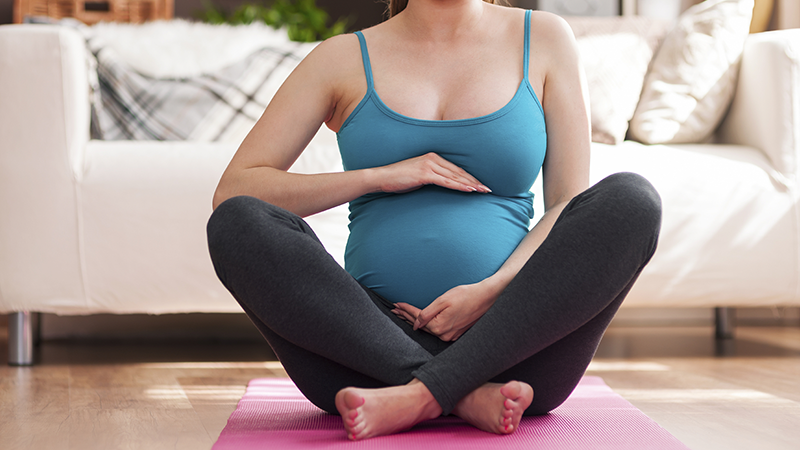What is my pelvic floor?
The pelvic floor (PF) is a group of muscles and ligaments within the pelvis, which run from your pubic bone at the front to your coccyx (tailbone) at the back. These muscles support your bladder, bowel and uterus, with your urethra, vagina and rectum passing from these organs through your pelvic floor.
What is the role of pelvic floor muscles?
The PF supports the organs within the pelvis (bladder, bowel and uterus) to prevent prolapse. It also provides control over bowel and bladder function to prevent incontinence.
What are the signs and symptoms of pelvic floor dysfunction?
- Incontinence or accidental leaking of urine when you cough, sneeze, laugh or exercise
- Not making it to the toilet on time
- Constantly needing to go to the toilet
- Difficulty completely emptying your bladder or bowel
- Incontinence of faeces or accidental passing of wind
- Prolapse- in women this may be felt as a bulge in the vagina or a feeling of heaviness, discomfort, pulling, dragging or dropping. In men this may be felt as a bulge in the rectum or a feeling of needing to use your bowels but not actually needing to go
- Pain in your pelvic region
- Pain with sex
What can cause pelvic floor dysfunction?
PF dysfunction can occur when the muscles are stretched, weakened or even too tight. Common causes of dysfunction are:
- Childbirth- particularly following delivery of a large baby (4kg+), prolonged pushing/delayed second stage or assisted delivery
- Increased weight during pregnancy or being overweight in general
- Constipation, due to repetitive straining to empty bowels
- Persistent heavy lifting
- Chronic coughing or sneezing, such as with asthma, hayfever or smoking
- Changes in hormone levels at menopause
How can I strengthen my pelvic floor muscles?
If your PF is weak to start with, it is best to start pelvic floor exercises lying down. In this position the muscles do not need to lift your pelvic organs up against gravity, making the contraction easier than sitting or standing.
- Start lying on your back, knees bent, feet flat on the floor/bed.
- Imagine the muscles you use to “hold on” when needing to urinate or hold in wind, you should feel a distinct tightening and lifting up of these muscles within your pelvis. Your pelvis and stomach should not move, so if someone was watching you, they would not know you were doing your pelvic floor exercises.
- Start by just tightening/lifting, then relaxing, without holding initially. Once you are confident with the contraction and feel a definite lift up followed by a let go, start to increase the length of contraction by holding at the top for 2-3 seconds. Progress towards a 10 second hold, allowing a few weeks to build the endurance.
- Try some quick squeezes for power. In the same position, squeeze and lift you pelvic floor as quick and strong as you can, then relax without holding on. Repeat 8-12 times or until fatigue.
- It is important to train the endurance of your pelvic floor, so you are able to get to the toilet on time, as well as the power, so you can avoid leaking with actions such as coughing and sneezing. Aim for 3 sets of 3-12 reps of both exercises. Once you can confidently perform the exercises lying down, it is good practice to try in sitting and standing and other more functional positions.
- Remember with both exercises you should feel a definite lift up, rather than a downward movement. Keep your thighs and buttocks relaxed, keep breathing and stop if your muscles fatigue and you can no longer feel a lift.
- If you have overactive pelvic floor muscles, you may find it difficult to squeeze and lift your pelvic floor, as your muscles are constantly activated, therefore already lifted. It is then more important to learn how to relax and breathe in the right way, to allow the muscles to relax.
How can I prevent pelvic floor dysfunction?
- Avoid constipation or chronic straining to empty your bowels
- Maintain a healthy weight
- Incorporate pelvic floor exercises into your daily routine, rather than waiting for signs or symptoms of dysfunction
Pregnancy and your pelvic floor
If you do not already perform PF exercises regularly, it is important to start when you fall pregnant. During your pregnancy your pelvic floor is placed under greater stress to support the weight of your baby and growing uterus. It therefore needs to be strong to allow for this increase in weight.
After delivery you should start performing PF exercises again straight away, as long as they are gentle and pain-free. Even if you could hold the contraction for 10 seconds whilst pregnant, you will likely need to start lying down, with short holds and build up endurance.
PF exercises are also still important after a caesarean delivery, to strengthen the muscles after carrying the extra weight of your baby during your pregnancy.
Where to seek help?
Many of the physiotherapist’s at Port Melbourne Physiotherapy & Pilates have a special interest in women’s health and pelvic floor function. With the help of real time ultrasound they are able to assess your pelvic floor function and provide you with an individualised home exercise program as well as advice to address any issues related to your pelvic floor.
We also work closely with many Women’s Health Physiotherapist’s in the area and will refer you onwards when appropriate.
If you have any questions or would like to make an appointment to see one o f our physiotherapists, please call 9681 7255.
~Tara

